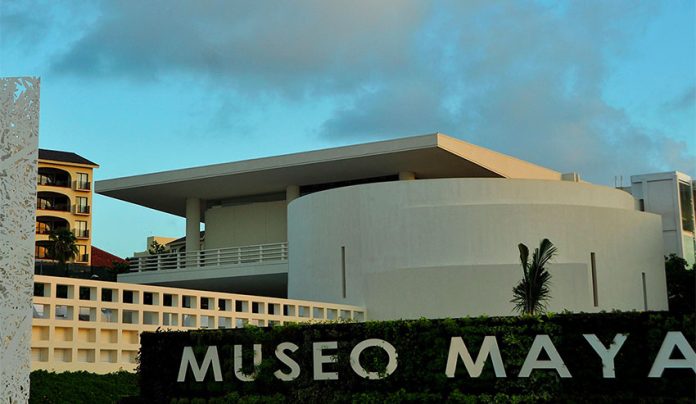Even before authorities issued decrees on the weekend ordering many public facilities to close, Mexico’s museums began postponing events and shutting down facilities in response to Covid-19. As of Monday, all museums in Mexico City were closed until at least April 20.
Although many of Mexico’s cultural institutions have not quite caught up to the 21st century, there are some online resources available, almost all of which are provided by museums related to Mexico’s National Institute of Anthropology and History (INAH).
Granted, seeing a photograph of a painting or a pyramid pales in comparison to having it in front of you. But it’s still good to know you can see some of what you’re missing while you sit at home in coronavirus quarantine.
INAH has a portal site that enables online views of select rooms from 56 of its 162 facilities. Many of these are from its flagship National Museum of Anthropology in Mexico City, but there are others from regional museums and archaeological sites in various parts of the country. Some sites require Adobe Flash to be enabled.
Some of the virtual tours are impressive and worth viewing with or without a national emergency.
National Anthropology Museum
The most important cultural museum in the country, this is Mexico’s answer to the Smithsonian or the British Museum. To visit all of its 22 exhibition halls requires at least two days. The virtual tours focus on the most popular rooms, in particular its pre-Hispanic and regional ethnographic collections.
Palace of Fine Arts (Palacio de Bellas Artes)
This is not a museum per se, but Mexico’s premier cultural center. It is a main attraction for the city because of its French-inspired architecture and murals by Diego Rivera, Rufino Tamayo and others.
Cancún Maya Museum
This is one of INAH’s newest museums, opened in 2012, with avant-garde design inspired by Mayan building columns from the 8th to 16th centuries. The lobby holds modern artworks, while the interior contains artifacts from various parts of Quintana Roo as well as the sites of Chichén Itzá (Yucatán) and Palenque (Chiapas).
Templo Mayor
This was the main temple of Tenochtitlán, the capital of the Aztec empire. It was thought for centuries to lie beneath the Mexico City cathedral until its accidental discovery in the 1970s. After much consideration, historic colonial-era buildings were demolished in order to excavate this center of pre-Hispanic religious life.
Museum of the Cultures of Oaxaca
This museum is located in the former Santo Domingo church and monastery of Oaxaca city. It is dedicated to the history of the state, with many original artifacts from the pre-Hispanic period up through the Mexican Revolution. It also has collections dedicated to documenting the various indigenous cultures that have a very strong influence on the state’s identity.
Cuauhnáhuac Regional Museum
This museum is located in Cuernavaca, using the original Náhuatl name of the city before it was Hispanicized. The building is better known as the Palacio de Cortés (Hernan Cortés’ Palace), after the conquistador who ordered its construction in the 16th century. It was the seat of his and his descendants’ rule as the Marquis of Oaxaca until the 17th century.
The museum is dedicated to the history and culture of the state of Morelos, especially its history as a major sugar cane producer in the late 19th century. One major attraction is a mural by Diego Rivera called History of Morelos, Conquest and Revolution, completed in 1930.
